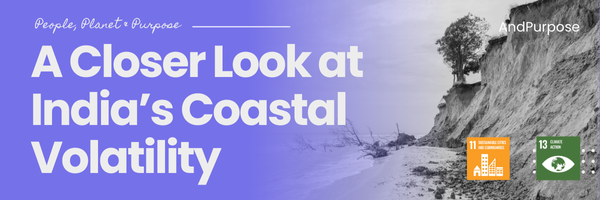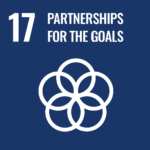When Coastal History Meets a Volatile Present
India’s coastline has long been more than a boundary. Across 7,500 kilometers, the sea shaped how people traded, settled, and adapted over thousands of years. The tidal dockyard at Lothal, built around 2200 BCE, showed how Harappan engineers aligned infrastructure with the movement of water. Centuries later, the bustling Sangam-era ports of Poompuhar and Kaveripattinam connected Tamil traders to markets as far as Rome and Arabia, proving that coastal life in India evolved through a deep understanding of tides, storms, and seasonal rhythms.
That history is now colliding with a more unstable present. The waters that once enabled flourishing maritime networks are shifting faster than coastal communities can adjust. Shorelines are retreating, settlements are losing land, and longstanding patterns of weather and water no longer behave the way generations of coastal societies once relied upon.
This edition begins with that turning point-where a coastline shaped by millennia of knowledge is being forced to confront a new volatility, and resilience must be redesigned rather than inherited.
Why Now?
Coastal India is now dealing with risks that increasingly reinforce one another. National shoreline assessments show that about 33.6% of India’s coastline is eroding, altering habitats, damaging infrastructure, and reshaping entire stretches of coastal settlements (PIB).
Sea-level rise is accelerating this shift. Recent analyses show that waters along the Arabian Sea and Bay of Bengal are rising faster than in previous decades, increasing the likelihood of tidal flooding and deeper salinity intrusion in vulnerable districts. (Newindianexpress).
Cyclone behaviour has shifted in parallel. Long-term IMD-linked datasets indicate a 52% rise in cyclonic storms over the Arabian Sea, along with more frequent very severe cyclones driven by warmer sea-surface temperatures. (Hindustan times).
These pressures now interact in ways that turn climate hazards into cascading failures. Rising seas reduce drainage efficiency, storm surges flush polluted runoff into already stressed waterways, and cyclones increasingly strike coastlines weakened by erosion and inadequate infrastructure. The result is systemic, interconnected disruption, no longer isolated climate events, but a pattern of compounding shocks along India’s coast.
The Way Forward:
Treat coasts as integrated systems, not separate sectors.

Plan shoreline protection, drainage, and waste management together so a single storm doesn’t trigger multiple failures. Integrated restoration models already show measurable reductions in local flood impact. (UNDP Climate Change Adaptation)
Scale nature-based infrastructure first.
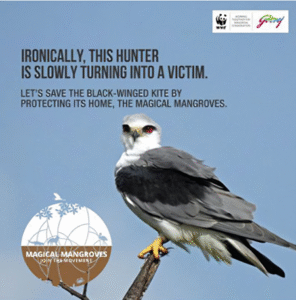 Mangroves and wetlands absorb storm energy and slow erosion. India’s recent efforts have restored 3,825 hectares of coastal ecosystems, including nearly 3,000 hectares of mangroves in Odisha and Maharashtra. UNDP Climate Change Adaptation.
Mangroves and wetlands absorb storm energy and slow erosion. India’s recent efforts have restored 3,825 hectares of coastal ecosystems, including nearly 3,000 hectares of mangroves in Odisha and Maharashtra. UNDP Climate Change Adaptation.
In Mumbai, Godrej & Boyce has managed the Pirojshanagar mangrove forest since 1985, including planting on a 40-hectare plot in 1999 (the first large-scale mangrove plantation in Maharashtra). It also developed a multi-lingual identification app covering 67 mangrove species, used in over 100 countries.
Stop waste before it reaches the shore.
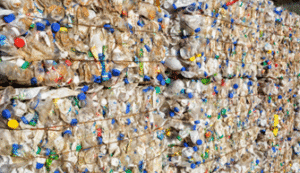 India’s coastline suffers heavily from upstream waste leakage. One of the largest interventions, Recykal’s Samudra Manthan® initiative has diverted over 70,000 metric tons of ocean-bound plastic across 207 districts in 19 Indian states, including both coastal and river-basin regions.
India’s coastline suffers heavily from upstream waste leakage. One of the largest interventions, Recykal’s Samudra Manthan® initiative has diverted over 70,000 metric tons of ocean-bound plastic across 207 districts in 19 Indian states, including both coastal and river-basin regions.
Build weather-resilient utilities that flex under stress.
 Sea levels are projected to rise 0.24 0.32 m by mid-century (IPCC), and the Arabian Sea is seeing more intense cyclones. Cities need modular wastewater systems, real-time drainage monitoring, and flexible flood protocols to prevent system wide collapse.
Sea levels are projected to rise 0.24 0.32 m by mid-century (IPCC), and the Arabian Sea is seeing more intense cyclones. Cities need modular wastewater systems, real-time drainage monitoring, and flexible flood protocols to prevent system wide collapse.
Spotlight: Next-Gen Coastal Mapping by Sagar Defence Engineering
![]()
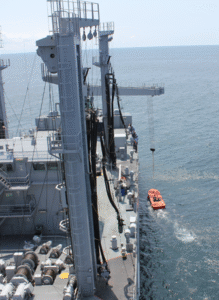
Mumbai-based Sagar Defence Engineering is developing autonomous marine drones that can map shorelines, monitor pollution, and assess post-cyclone damage without putting responders at risk. Their unmanned surface vessels (USVs) can operate in rough coastal waters, collect real-time data on debris, currents, and contamination, and relay it directly to disaster management teams.
Hottest Grants this Week
AndPurpose Grants
 Journalism fund Europe’s Environmental Investigative Journalism Program supports cross-border teams of professional journalists investigating environmental issues related to European affairs. Teams from at least two countries can investigate environmental destruction, biodiversity loss, climate impacts, and comparative local policies. Grants cover working time, travel, logistics, legal support, and technology. Results must be published in two outlets across different countries (one European). Requires publication letters of intent and 12+ month media entity incorporation.
Journalism fund Europe’s Environmental Investigative Journalism Program supports cross-border teams of professional journalists investigating environmental issues related to European affairs. Teams from at least two countries can investigate environmental destruction, biodiversity loss, climate impacts, and comparative local policies. Grants cover working time, travel, logistics, legal support, and technology. Results must be published in two outlets across different countries (one European). Requires publication letters of intent and 12+ month media entity incorporation.
Deadline: January 22, 2026
 The India Foundation for the Arts (IFA), in collaboration with the Vintage Hub in Jorhat, Assam, is inviting proposals for creative and scholarly projects under its Archives and Museums Programme. This call supports individuals interested in engaging with archival materials, collections, or museum contexts to produce new research, artistic work, or innovative interpretations. The initiative aims to deepen public understanding of cultural heritage while encouraging experimentation, critical inquiry, and community centered documentation within India’s archival and museum spaces.
The India Foundation for the Arts (IFA), in collaboration with the Vintage Hub in Jorhat, Assam, is inviting proposals for creative and scholarly projects under its Archives and Museums Programme. This call supports individuals interested in engaging with archival materials, collections, or museum contexts to produce new research, artistic work, or innovative interpretations. The initiative aims to deepen public understanding of cultural heritage while encouraging experimentation, critical inquiry, and community centered documentation within India’s archival and museum spaces.
Deadline: 17 December 2025
AndPurpose Forum 2025 – Mumbai

Come, bring your tribe along!
Get 20% OFF on 2 tickets, and 30% OFF on 3 and more
As India’s coastal challenges deepen, the Forum creates space for ideas that can move quickly from insight to implementation. This edition brings together practitioners working across climate risk, blue economy transitions, circular systems, and community-led adaptation, all in one room.
📅 10 December 2025
📍Jio World Convention Centre, Mumbai
The forum focuses on four themes shaping the next decade of impact:
- Coastal Futures & Blue Economy
- Climate Finance & Risk Systems
- Circular and Regenerative Urban Models
- Community Resilience & Local Adaptation
Running alongside the main sessions, Social Innovation Exhibit highlights ventures building practical solutions across water, waste, livelihoods, and climate resilience in a curated space designed for collaboration, partnerships, and visibility.
Apply Now!
Social Innovation Exhibit
Applications close Dec 1, 2025 Purpose Pitch Innovations that fuel our future – for people & the planet.
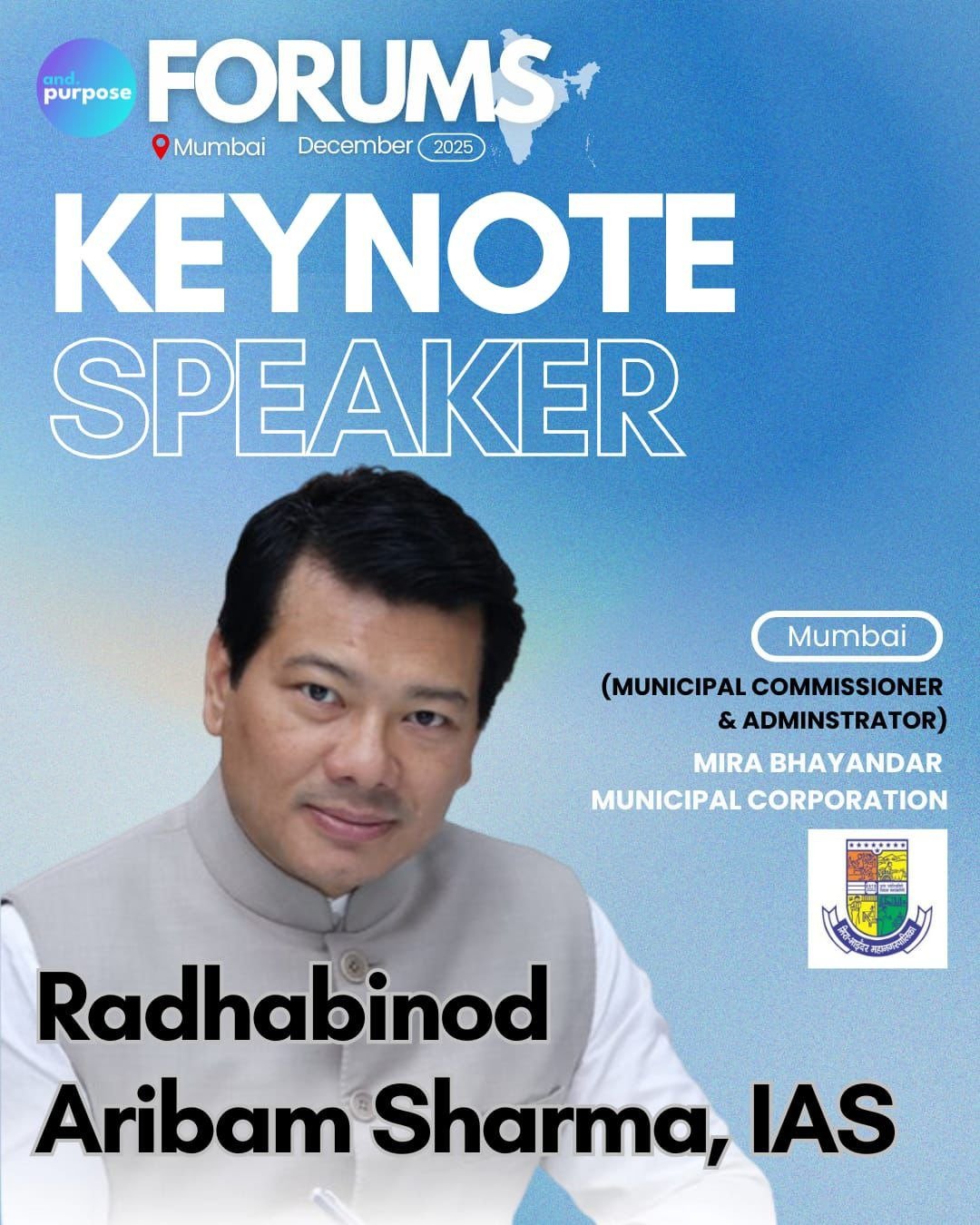
Coastal India is entering a decade where small delays carry big consequences. But across districts, ports, and estuaries, the first signs of redesigned resilience are already visible – in restored mangroves, upstream waste interception, adaptive utilities, and community-led preparedness.
This moment calls for solutions that are practical, collaborative, and built for the long term. As we move ahead, the goal is resilience by strengthening the systems that keep our coasts alive.
With Love & Purpose
Team AndPurpose

